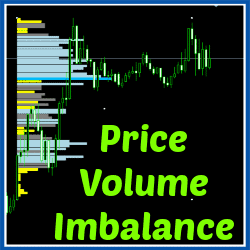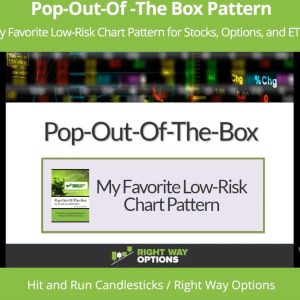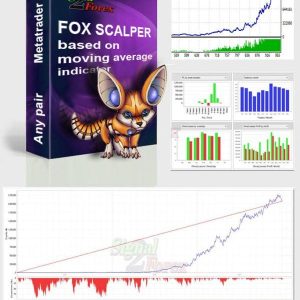Your cart is currently empty!
Price Volume Imbalance Trading Strategy
Price Volume Imbalance Trading Strategy Original price: $197 Content: Indicator: DragDropVolumeProfile_v1.5.ex4, UserGuides: DragDropVolumeProfile-UserGuide.pdf, OVPdirections.rtf Price Volume Imbalance – Trading strategy Let’s go back to the very beginning: Jesse Livermore, Charles Dow, Richard Wyckoff. 3 of the most iconic traders of the past. And they have 1 thing in common: They all rely on volume as a basic tenet of […]
Description
Price Volume Imbalance Trading Strategy
Original price: $197
Content: Indicator: DragDropVolumeProfile_v1.5.ex4, UserGuides: DragDropVolumeProfile-UserGuide.pdf, OVPdirections.rtf
Price Volume Imbalance – Trading strategy

Let’s go back to the very beginning:
Jesse Livermore, Charles Dow, Richard Wyckoff.
3 of the most iconic traders of the past. And they have 1 thing in common:
They all rely on volume as a basic tenet of their trading.
Following these giants’ footsteps, it’s time for retail FX traders to learn how to use volume in their trading too.
But maybe you’re wondering…
Is It Relevant To The FX Market?
Maybe you’ve heard that there’s no real volume in forex. Instead, we only have tick volume, which measures trading activity of market participants during a given time period.
But here’s the kicker:
Recent research shows that there’s a high correlation (as high as 97.9%) between tick volume and real volume…
Now, if you look at the raw data that your brokers provide, what would you see?
It’d be something like this:
Do you see the problem here? The market gives you 2 important pieces of information: Price and Volume. And if I have to guess, 95% traders only use price in their analysis, and completely ignore Volume which is equally important.
It changes TODAY.
Why? Because today we’ll show you an unusual technique to analyze Volume in the FX market to identify high-probability market turning points, and pinpoint trade entries and profit targets.
This technique is called Volume Profiling. And I guess the first thing I should explain is…
What exactly is Volume Profile?
Volume Profile is a visual representation of how much volume occurs at each individual price over a certain period of time.
Here’s an example:
The colored box represents the range of bars over which this market profile is calculated and drawn. The market profile itself consists of a series of horizontal bars. And each bar represents how much volume occurs at each price level over this time period.
By the way, here’s the link to a Wikipedia article on Market Profile, a similar concept to Volume Profile. Read it if you’d like to dig deeper into this stuff.
You may notice that there are always some prices at which a lot of trading occurs. That means high volume. And we call these price levels: High Volume Nodes (HVN).
On the other hand, there are always some prices where very little trading occurs. That means low volume. And we call these price levels: Low Volume Nodes (LVN).
There’s also a special price level where the most trading occurs. We call this level: Volume Point Of Control (VPOC)
Let’s mark these levels on the chart so you can thoroughly understand the concept:
(This Volume Profile is drawn using our brand-new Drag & Drop Volume Profile indicator)
A few things you should note: The range of bars encompassed in the lavender rectangle is the period over which our Volume Profile is calculated.
The Volume Point Of Control is highlighted in turquoise. The Low Volume Nodes are highlighted in yellow. You can also notice a few High Volume Nodes that really stand out.
As mentioned, High Volume Nodes represent price zones where heavy trading took place between buyers and sellers. That also means that these prices are accepted by market participants. Buyers are happy to buy and sellers are happy to sell.
What’s more important is that once the prices move out these High Volume Nodes, they are likely to act as strong support and resistance when the price revisitits these areas.
In other words, these High Volume Nodes are magnetic to price…
Price is likely to be drawn towards the High Volume Nodes. And this characteristic is invaluable because now you can plan your trades in advance, knowing which areas the price will likely gravitate to.
Here’s an example on USD/JPY 4-hour chart:
In this example, the price is stuck in a consolidation period for a while before breaking out to the downside. We draw a Volume Profile for this period of consolidation. The red line on this chart marks the Volume Point Of Control (the most significant High Volume Node of all) which is the price where most trading occurs.
After this period of consolidation, the price breaks out to the downside. Then it briefly rises again until it hits the Volume Point Of Control. And as you can see, the price bounces off this Volume Point Of Control very aggressively upon retest.
We learn 2 things from this example: First, High Volume Nodes are magnetic to price. Price likes to hang around these nodes. And that means once the price breaks out of the High Volume Nodes, it is likely to gravitate towards these levels again and retest them.
And second, High Volume Nodes often act as strong support and resistance levels. And in our experience, more often than not, the price will aggressively bounce off these High Volume Nodes upon retest.
Here’s another example to really drives these concepts home:
Now, let’s talk about Low Volume Nodes. These represents the prices at which there’s little trading taking place. And that means the market participants think these prices are unfair.
When price revisits these Low Volume Nodes, it will either move through these zones very quickly, or get rejected very quickly.
An example of price sliding through these zones fast:
And here’s an example of price gets rejected when testing these Low Volume Nodes. Although the probabillity of price bouncing off Low Volume Nodes is lower than price bouncing off High Volume Nodes, when it does happen, it’s usually very quick. And that allows us to use a tighter stop and hopefully win a trade fast:
Now, let’s discuss Volume Price Of Control (VPOC). This is the price at which the most trading occured. Take this example on USD/JPY 30-minute chart:
In this example, we draw the Volume Profile over a period of several trading sessions. The VPOC of this Volume Profile is immediately retested the following day. And it held strong as support. If you decided to take this trade, it would give you a low-risk entry.
We still haven’t talked about one of the most useful feature of Volume Profile. And it is that:
Volume Profile shows you the market’s structure and provides context for current price action. And they gives you clues to where big support & resistance levels are…
For example, take a look at this daily chart:
In this example, we draw a Volume Profile over the last 750 trading days. And this Volume Profile immediately shows you the structure of the market, and helps you instantly see where the big support and resistance levels exist.
We mark these levels – which are High Volume Nodes from the Volume Profile – as red horizontal lines on this chart. There are 2 particularly important levels: High Volume Node (1) and High Volume Node (2) which will be very useful when we switch to a lower timeframe (4-hour in this case) to find potentially entries and exits.
Now, let’s take a look at the 4-hour chart and focus on the current price action:
On the 4-hour timeframe, the current price is retesting High Volume Node (1). And it would provide us with a low-risk entry for going short (in the direction of the longer-term bearish trend) as we expect this High Volume Node to hold as resistance. In addition, since price usually gravitate towards High Volume Nodes, I’d personally use High Volume Node (2) as my profit target.
Let’s see how this trade works out:
As expected, price gets rejected by the High Volume Node (1) and starts to move down aggressively. I hope this example helps you understand how one might use Volume Profile to determine potential entries and exits.
While this example uses High Volume Nodes as potential entries, did you know that…
You could also use Low High Node to identify high-probability entries…
Take a look at this EUR/USD 30-minute chart:
In this example, we draw a Volume Profile over yesterday’s market action. Pay attention to the Low Volume Node that I highlight on the photo, it would become very useful later on. But first, let’s analyze today’s price activity:
As you can see, the price starts to drift lower. Since we know that price tends to move through Low Volume Nodes quickly, I’d assume that once the price hits this Low Volume Node, it would slide through this zone fast and continue its downward move. So this Low Volume Node would give me a low-risk trade entry.
What about profit targets? This is where Volume Profile comes in handy again, because:
You could use Volume Point Of Control and High Volume Nodes as profit targets…
In this case, I’d use the Volume Point of Control and High Volume Node I highlight on the photo as my profit targets.
Let’s see how this trade works out:
As expected, once the price hits the Low Volume Node, it quickly slides through this zone and falls aggressively. Both of our profit targets are hit quickly.
Did you notice how the price hangs around our Profit Target 2 (which is a High Volume Node) for quite a while? That’s also expected because remember, High Volume Nodes often acts as price magnets. And price likes to gravitate to and hang around these areas.
This also means that once the price breaks out of this support zone, it will likely continue to move downward. And that’s exactly what happens in this case:
By now, you’ve seen the power of analyzing volume through the use of Volume Profile. These principles are timeless. They worked 20 years ago. And they’re working now.
Related products
-
‘Kernel Density’ Market Tops & Bottoms Indicator
Original price was: $99.00.$16.00Current price is: $16.00. -
‘Milking The Markets’ With Renko Bar Trading
$59.00 -
‘Pop Out Of The Box’ Pattern by Doug Campbell
$49.00 -
“FOX SCALPER” – FOREX EXPERT ADVISOR BASED ON MOVING AVERAGE INDICATORS.
$110.00 -
“Kaizen ON-DEMAND Apprenticeship” by Steve Nison
Original price was: $895.00.$200.00Current price is: $200.00.





